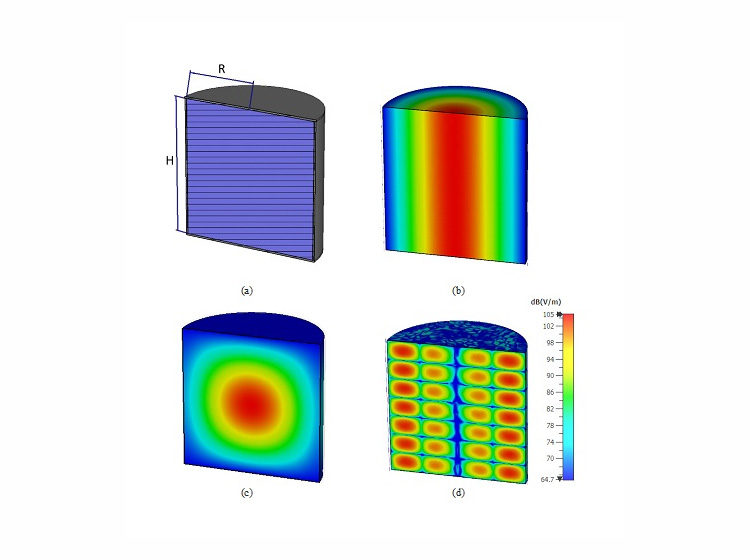In our previous papers on Electro-Chromic (EC) materials, we have shown that standard inorganic EC structures in the form of EC film/electrolyte/Ion storage films (such as WO3/LiNbO3/NiO) and advanced structures in the form of electrolyte/EC film/Ion storage/ electrolyte, such as LiNbO3/WO3/NiO/LiNbO3 films in addition to possessing reconfigurable optical properties also exhibit a degree of electric field induce dielectric tunability at radio frequencies. The extent of dielectric tunability in the standard EC structures is commensurate with the tunability exhibited by more mature bulk-tuneable technologies, such as Liquid Crystals (LCs), being between 5% and 20% depending on the frequency of operation, the thickness of the individual EC layers (EC films, electrolyte and ion tank), while the dielectric tunability of the advanced structures is as high as 65 % at 20 GHz. However, the measurements of the dielectric tunabilities were performed at room temperature.
This paper reports for the first time, the dielectric characterization of a new, electronically tuneable EC thin-film (WO3/LiNbO3/NiO) material over the frequency range 1-67 GHz, at temperatures of 7 °C, 23 °C, and 50 °C. Test cells composed of a microstrip line terminated with coplanar waveguide (CPW) transitions were fabricated to facilitate on-wafer RF measurements and the application of different bias voltages using a standard CPW probe station. A precise curve-fitting technique based on full-wave simulations was used to extract the permittivity and loss tangent values of the material. The validity of the dielectric extraction technique was first demonstrated by employing a known material, silicon dioxide (SiO2 ). It is shown that the dielectric tunability of the EC material varies between 11.3% (1 GHz) and 7.5% (67 GHz) at 23 °C, and the measured loss tangent varies between 0.012 (OFF, 0 V, state) and 0.025 (ON, 6 V, state). Above room temperature, the devices exhibit higher values of dynamic tunability and a small increase in insertion loss. The results obtained for this first generation of tuneable EC material are encouraging, and many of the dielectric properties are shown to compare favourably with other, more mature bulk tuneable media, such as liquid crystals.




Leave a Reply